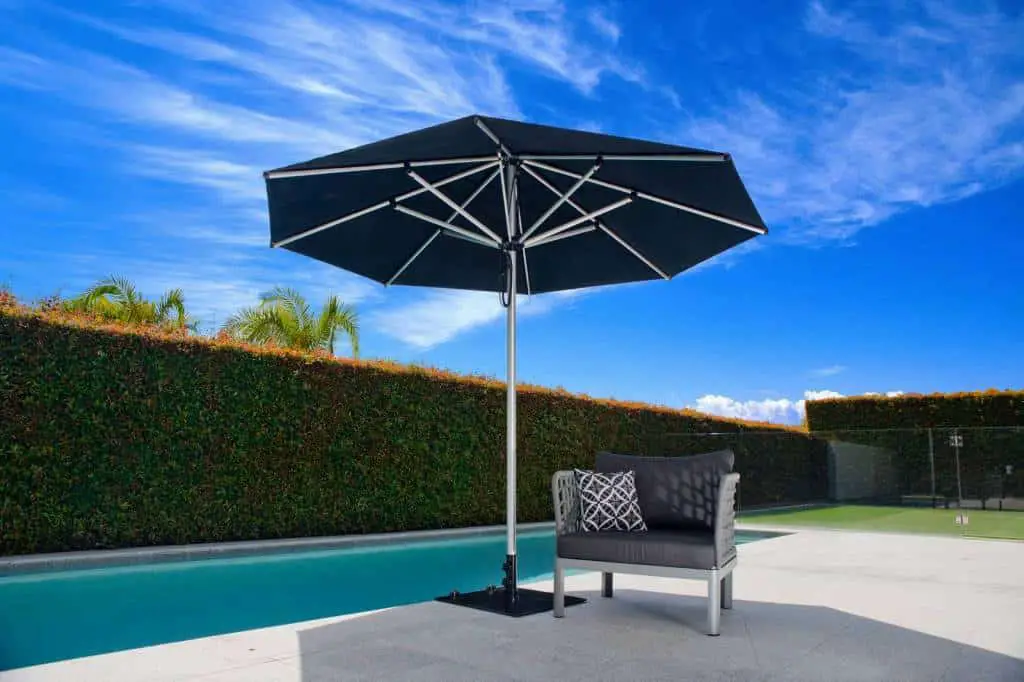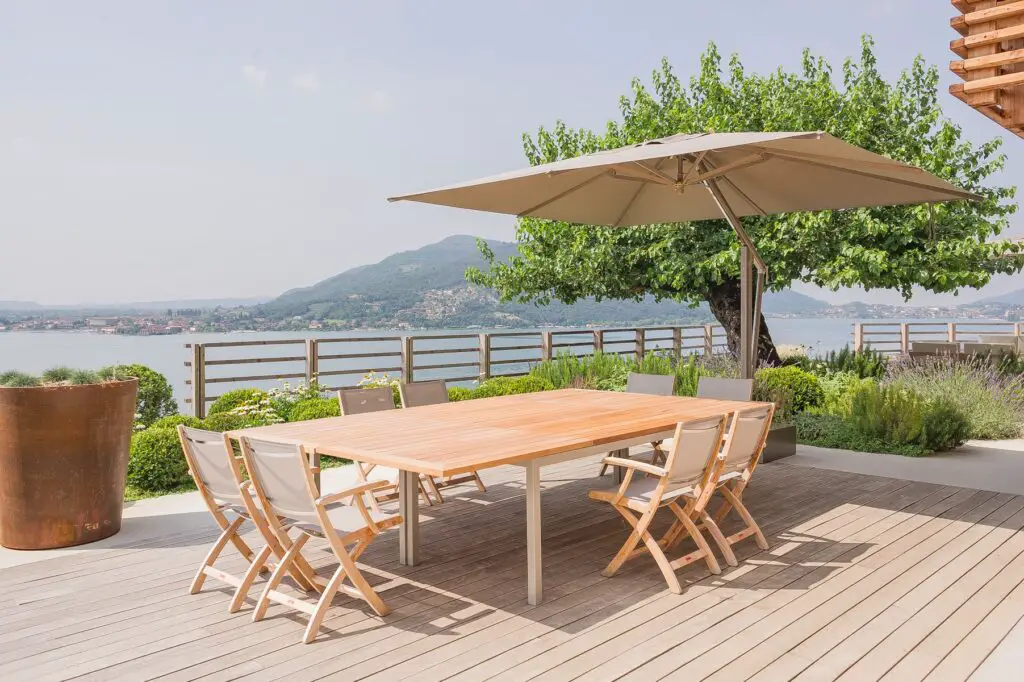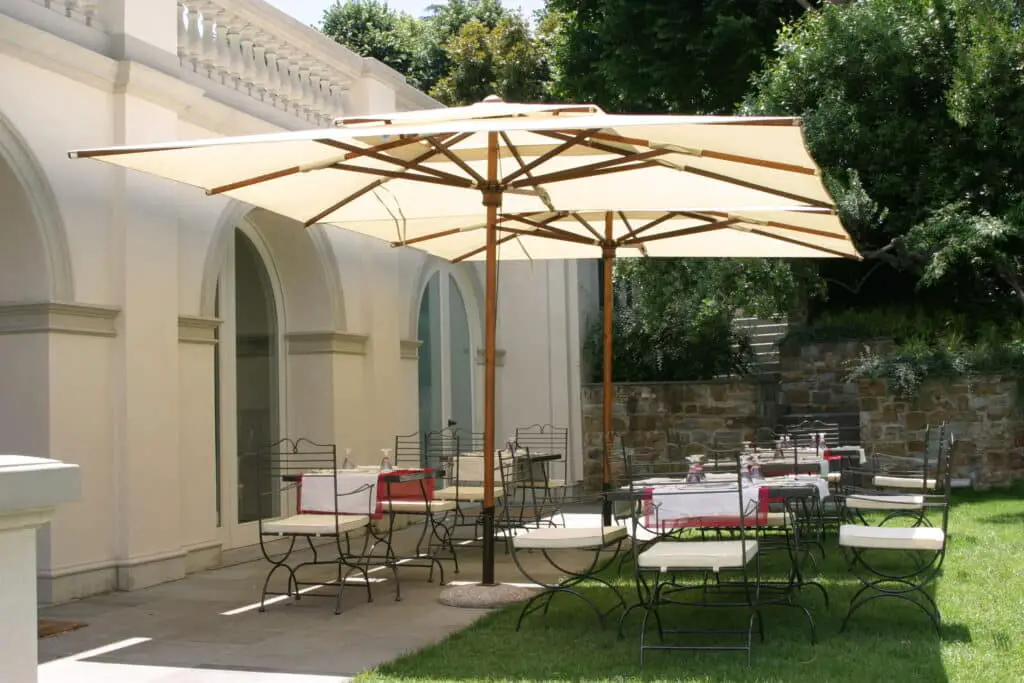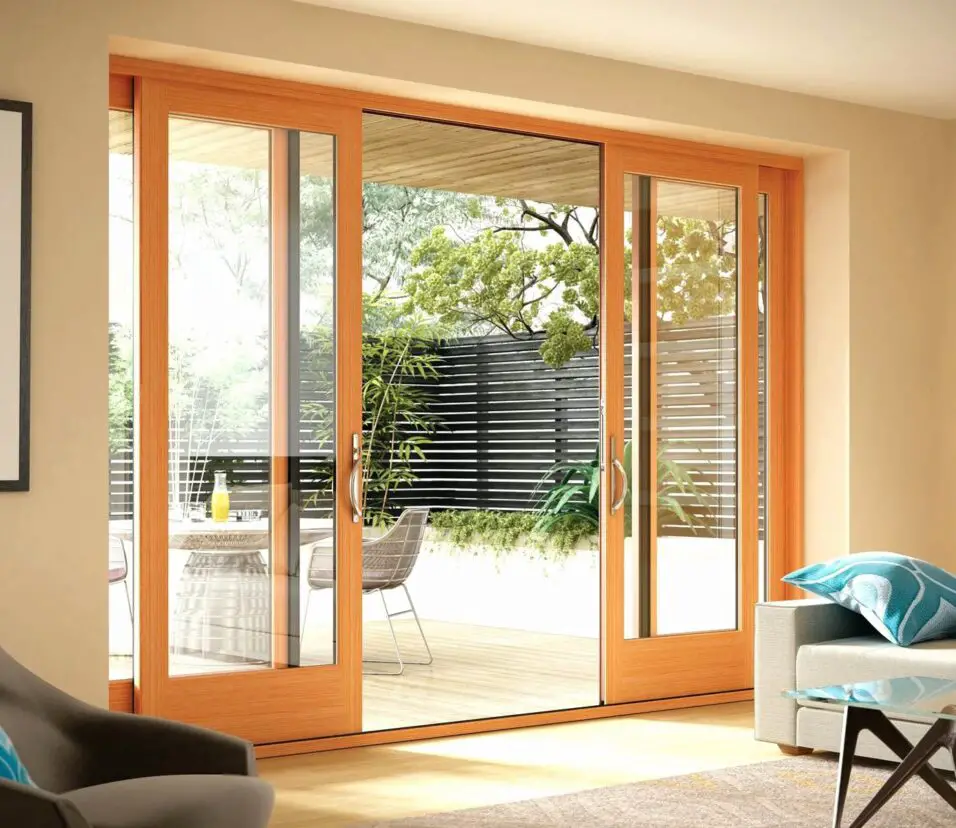How To Restring A Patio Umbrella
Introduction
How To Restring A Patio Umbrella: Begin by opening the umbrella fully and stabilizing it in the open position. Look for the knot or securing mechanism that holds the old cord in place. Use pliers to carefully undo the knot or remove any clips or screws that are holding the cord in place. As you do this, pay attention to the path the old cord takes through the umbrella’s frame. Take the old cord and use it as a reference to measure the length you need for the new cord.
Starting at the top of the umbrella, where the finial is located, thread the new cord through the designated holes and channels in the umbrella’s frame. Follow the path of the old cord, making sure it goes through all the necessary loops and pulleys. If there are any tricky spots, a pair of tweezers can be helpful to guide the cord through. Once the new cord is threaded through the entire umbrella, make sure it is taut but not overly tight.
With the new cord in place, test the umbrella by opening and closing it a few patio cushions times. Ensure that it opens smoothly and locks into place securely. Adjust the tension of the cord if needed to achieve the desired level of resistance when opening and closing the umbrella. Add a few extra inches to ensure you have enough length to work with. Use sharp scissors to cut the new cord to the appropriate size. Create a secure knot at the bottom of the umbrella, or use the appropriate clips or screws to fasten the cord in place, just as the old cord was secured.

How do you reattach an umbrella string?
Thread the string through the eyelet on the crank handle. Tie a knot on the end of the string to prevent it from passing through the eyelet. Feed the knotted end of the string through the umbrella support hole first. Reconnect the crank handle onto the cotter pin assembly.
Take the old string (if available) or measure the length required by running a tape measure along the path where the string should go. Add a few extra inches to account for any variations or knots needed. Using sharp scissors, cut the replacement string to the determined length.
Starting from the top of the umbrella, where the finial is located, carefully thread the replacement string through the designated holes and channels. Follow the same path that the original string took, ensuring it goes through any loops, pulleys, or guides. If there are tight spots, use pliers or tweezers to help guide the string through.
Once the replacement string is threaded through the entire length of the umbrella, it’s time to secure it in place. If your umbrella uses knots, make sure to tie a secure and tight knot at the bottom. If there are screws or clips holding the string, use the appropriate tools (e.g., screwdriver) to fasten them tightly.
Gently test your umbrella by opening and closing it a few times. Ensure that the string operates smoothly and that the umbrella locks into place when fully opened. Adjust the tension if necessary by tightening or loosening the knots or clips.
If there is any excess string protruding from the bottom of the umbrella, trim it with scissors, leaving just enough length to re-tie or secure it.
How do you fix a push button umbrella?
- Step 1 How to Fix a Button on an Umbrella.
- Remove the umbrella handle by pushing on the eject push-up button.
- Place a thin malleable metal in between the button’s connection to the metal projection.
- Apply permanent adhesive to secure the thin metal to the button’s walls.
The first step in fixing a push button umbrella is to carefully inspect the mechanism. Often, debris, dust, or sand can accumulate within the push button assembly, causing it to stick. Gently tap the umbrella frame to dislodge any loose particles, and use a can of compressed air to blow away stubborn debris.
If the push button remains stiff or stuck after cleaning, applying some lubricant may resolve the issue. Choose a silicone-based lubricant or a dry graphite lubricant, as these are less likely to attract dirt and grime. Carefully apply the lubricant around the push button and inside the button housing, and then press the button repeatedly to distribute the lubricant evenly.
The push button relies on a spring to engage and disengage the locking mechanism. If the spring is worn out or has lost its tension, the button may not function correctly. Inspect the spring for any signs of damage or deformation. If necessary, replace the spring with a new one that matches the original specifications.
Sometimes, misalignment of the push button can prevent it from engaging properly with the umbrella’s locking mechanism. Check to ensure that the button is aligned correctly within its housing. Make any necessary adjustments to realign the button, and test its functionality.
How long do patio umbrellas last?
A quality patio umbrella will last many years. Sourced from Sunbrella®, the canvas fabric used by Poggesi for patio umbrellas have a limited ten-year warranty. The structure of Poggesi umbrellas is made from powder-coated aluminum, and we use stainless-steel cables and bolts for their durability.
High-quality materials, such as durable fabrics like Sunbrella or Olefin, and strong metal or fiberglass frames, tend to last longer than cheaper alternatives. Investing in a patio umbrella made from robust materials can significantly extend its lifespan.
The way a patio umbrella is constructed also impacts its longevity. Umbrellas with solid, well-engineered components, and reinforced joints are likely to withstand the elements and regular use better than flimsily constructed ones.
Patio umbrellas spend most of their time outdoors, exposed to various weather conditions. Over time, exposure to sunlight, rain, wind, and other environmental factors can degrade materials and weaken the umbrella’s frame.
The more frequently you use your patio umbrella, the faster it is likely to experience wear and tear. If you use the umbrella daily during the sunny season, it may wear out faster compared to those used occasionally.
Proper maintenance and care can significantly prolong the life of a patio umbrella. Regularly cleaning the fabric, keeping the frame free of dirt and debris, and storing the umbrella properly during harsh weather conditions are essential to prevent premature deterioration.
Can you leave patio umbrellas out in the rain?
Even though the fabric is usually water resistant, it can still degrade over time from prolonged exposure to moisture. The more frequently you leave the umbrella open, especially in the rain, the more likely the fabric is to become brittle and tear (especially if it is storming or there are strong winds as well).
Most patio umbrellas have fabric canopies, and although they are often water-resistant to some degree, they are not completely waterproof. Prolonged exposure to rain can cause the fabric to absorb water, leading to stretching, sagging, or even mold and mildew growth. Fabric damage can compromise the umbrella’s appearance and structural integrity.
The frame of patio umbrellas is typically made of materials like aluminum, steel, or fiberglass. While these materials are relatively durable, they are not impervious to moisture. Continuous exposure to rain can cause rust and corrosion, weakening the frame and reducing its stability.
When water accumulates in the folds or crevices of a wet patio umbrella, it creates a favorable environment for mold and mildew to thrive. These fungal growths not only look unsightly but can also pose health risks to those using the umbrella.
Prolonged exposure to rain and sunlight can cause the fabric of patio umbrellas to fade and lose its original color. This can result in an uneven appearance and may necessitate replacing the fabric sooner than expected.
The connectors and joints of patio umbrellas can also suffer from exposure to rain. Water can seep into these areas, causing the parts to weaken or corrode, which may lead to instability and even collapse during use.

What is a cantilever patio umbrella?
What is a Cantilever Umbrella? Rather than having a pole at the center, a cantilever umbrella is supported by a sturdy pole and base at the side with a rotating arm. This means that you can rotate the umbrella as the sun moves and enjoy the shade in different areas without having to move the base.
Cantilever patio umbrellas are designed with a sturdy base and a pole that extends vertically from one side. The canopy is connected to the pole using a joint or an arm that allows it to rotate and tilt. This enables users to position the canopy at various angles, providing shade exactly where it’s needed.
One of the main advantages of a cantilever umbrella is its versatility. The offset design allows for unobstructed space underneath the canopy, providing more freedom for furniture arrangement and creating a comfortable seating area. It is particularly useful for shading large seating or dining sets, poolside loungers, or outdoor entertainment spaces.
Cantilever umbrellas typically offer 360-degree rotation, allowing users to adjust the position of the canopy as the sun moves throughout the day. This feature provides continuous shade coverage without the need to move the entire umbrella. Additionally, many cantilever umbrellas have a tilting function, enabling users to tilt the canopy to block the sun from different angles.
The ability to adjust the position and angle of the canopy allows for better sun protection throughout the day. It’s especially beneficial during early morning or late afternoon when the sun is lower on the horizon and can penetrate under a traditional center-post umbrella.
What can I do with old patio umbrellas?
You can use old umbrellas to make dozens of items, including walkway canopies, reusable bags, wall hooks and garden trellises.
Remove the canopy and use the umbrella frame as a trellis or support structure for climbing plants in your garden. The metal or wooden frame can serve as a sturdy and attractive structure for vines, flowers, or vegetables to grow and flourish.
If the fabric of your old patio umbrella is still in good condition, consider using it as a beach cabana for your next seaside vacation. Alternatively, you can repurpose the canopy as a privacy screen for your outdoor space, creating a cozy nook or hiding an unsightly area.
Remove the fabric and repurpose the umbrella frame into an elegant outdoor chandelier. Add fairy lights or candles to create a beautiful and atmospheric lighting fixture for your patio or garden. You can also hang other decorative elements like hanging flower baskets or wind chimes from the frame.
Transform the umbrella pole and frame into an upcycled patio table. Attach a circular or square wooden or metal tabletop to the frame to create a unique and functional outdoor table. Paint or stain the table to match your existing decor.
Use the umbrella frame as a foundation for a garden sculpture or art installation. Add colorful glass or metal elements to create a striking and eye-catching centerpiece for your garden.
What is the best material for a patio umbrella?
Sunbrella
Sunbrella is the most popular fabric for outdoor cantilever umbrellas because it is durable, as well as stain- and weather-resistant. Acrylic is soft, lightweight, and can easily be dyed in vibrant and colorful shades. This material resists shrinking or wrinkling and retains its shape well.
Sunbrella fabric is one of the most popular and highly regarded choices for patio umbrella canopies. It is known for its exceptional durability, UV resistance, and colorfastness. Sunbrella fabric is fade-resistant, mold and mildew resistant, and easy to clean, making it ideal for outdoor use in all weather conditions.
Olefin is another excellent option for patio umbrella canopies. It is resistant to fading, mildew, and moisture, making it suitable for outdoor use. While it may not be as durable as Sunbrella, Olefin is more affordable and offers good performance for its price.
Polyester fabric is a budget-friendly option that provides decent weather resistance and color retention. However, it may not be as durable as Sunbrella or Olefin and may require more frequent replacements over time.
Aluminum is a popular choice for patio umbrella frames due to its lightweight, rust-resistant, and durable properties. It is easy to move around and provides excellent stability, making it suitable for various weather conditions.
Fiberglass frames are known for their flexibility and strength. They are less likely to break or bend in strong winds, making them a reliable choice for windy areas.
Wooden frames can add a classic and natural aesthetic to your outdoor space. However, they require more maintenance than metal or fiberglass frames to prevent warping, rot, and insect damage.
Should patio umbrella be light or dark?
The great news about choosing a patio umbrella colour is that it’s hard to go wrong. A dark-coloured umbrella is a great low-maintenance choice as it easily hides stains and can blend in with its surroundings, while lighter-coloured umbrellas can add a pop of colour and personality to your space.
Reflects Heat: Light-colored umbrellas, such as beige, off-white, or light gray, tend to reflect more heat from the sun compared to darker shades. This can help keep the area underneath the umbrella cooler during hot summer days.
Less Fading: Light-colored fabrics are generally less prone to fading from prolonged exposure to sunlight. They can maintain their original appearance for a longer time compared to darker fabrics.
Versatile Aesthetics: Light-colored umbrellas have a neutral and versatile aesthetic that complements a wide range of outdoor decors and furniture styles.
Shows Less Dirt: Light-colored fabrics may show less dirt and dust, making them easier to maintain and keep looking clean.
Aesthetic Considerations: Light-colored umbrellas create an airy and open feel, making them ideal for small outdoor spaces or areas where you want to maintain a sense of brightness and spaciousness.
Considerations: Light-colored fabrics may be more susceptible to stains from spilled drinks, food, or tree sap. While they reflect heat well, they may not offer as much shade as darker fabrics due to their higher transparency.

Conclusion
This knowledge can come in handy if you ever need to make further repairs or adjustments in the future. Plus, you’ll be able to enjoy your outdoor space comfortably and stylishly once again, shielded from the sun’s rays. It’s a small yet impactful step in making a positive environmental difference. An umbrella string is an essential component that allows you to open and close your umbrella effortlessly, providing shade and protection from the elements.
Remember, the key to a successful restringing is careful observation and following the path of the old cord. Take your time to thread the new cord through the correct channels and loops, ensuring a smooth opening and closing mechanism. Proper tension is essential, as umbrella’s functionality and longevity. By restringing your patio umbrella, you contribute to reducing waste and promoting a sustainable approach to maintenance.
Before embarking on the project, be sure to choose the right replacement cord that matches the original specifications of your umbrella. Taking accurate measurements and allowing for some extra length will ensure you have sufficient cord to work with. Restringing a patio umbrella might seem daunting at first, but with the satisfaction of a job well done and a rejuvenated outdoor accessory, you’ll feel accomplished and confident in your DIY abilities.








